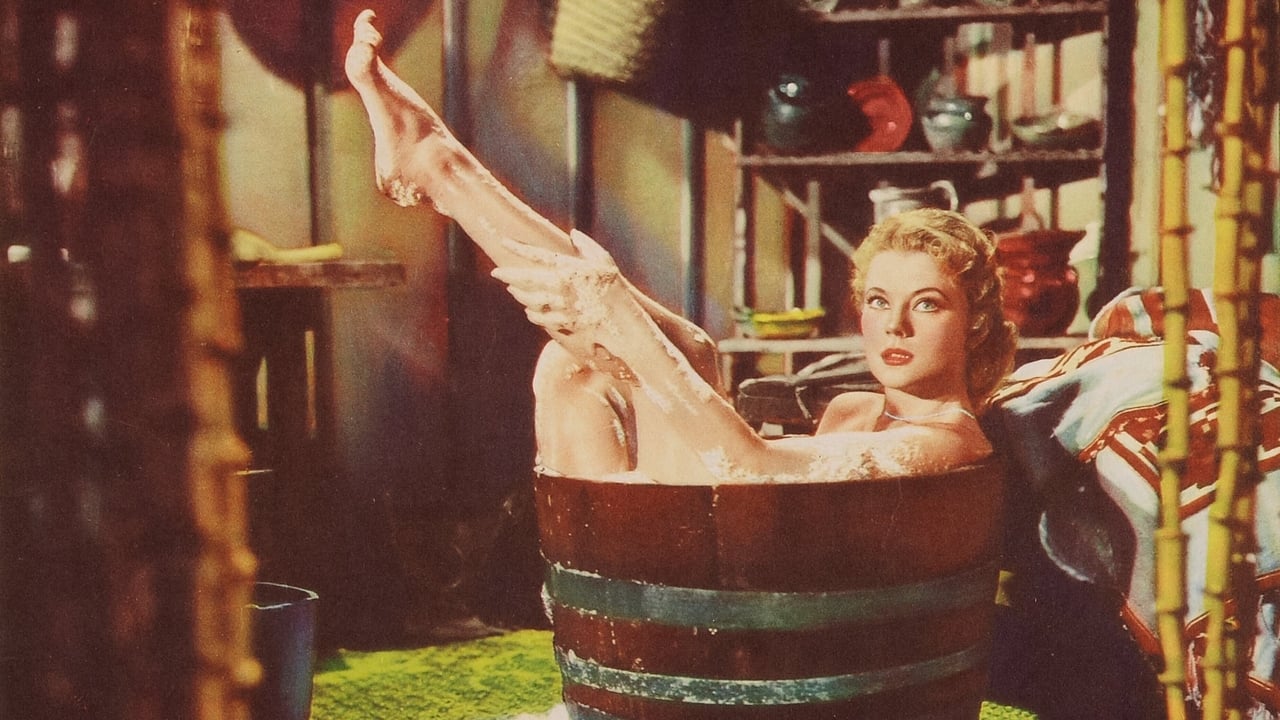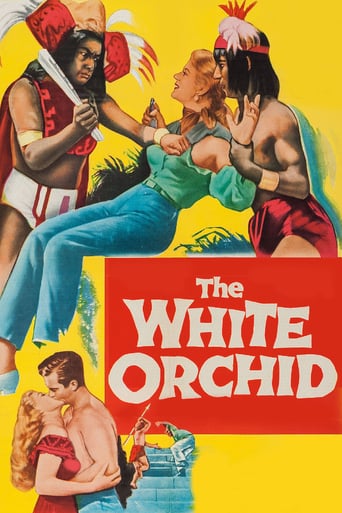Kattiera Nana
I think this is a new genre that they're all sort of working their way through it and haven't got all the kinks worked out yet but it's a genre that works for me.
EssenceStory
Well Deserved Praise
Nayan Gough
A great movie, one of the best of this year. There was a bit of confusion at one point in the plot, but nothing serious.
Richard Chatten
The most original moment of this glorified Mexican travelogue in colour is the opening scene which initially seems to be being narrated to us by William Lundigan, who then turns out to be dictating into a tape recorder. Unfortunately, with the appearance a few minutes later of gorgeous high-maintenance Peggie Castle to introduce herself as his photographer he responds with the usual boorishness towards women that heroes in these films always display and banality is the order of the day for the remainder of the film. Things actually get worse when Armando Silvestre enters the picture as their guide, since the two of them thereafter bicker incessantly over her. (She's wearing a wedding ring, but no one ever mentions that, including Ms Castle.) Peggie herself looks a treat as usual, especially after she changes into jeans and a blouse to go on safari (during which she continues to wear lipstick); but director Reginald LeBorg is perplexingly extremely parsimonious with close ups of her.The 'plot' however is just the glue holding together the Eastman Color footage of fiestas and Mexican scenery shot by Gilbert Warrenton and local cameraman Enrique Wallace (billed as 'Henry'). Lundigan is supposed to be a famous archaeologist who has written books and given lectures about the area, yet has to keep asking Silvestre to explain everything they encounter; and at the end demonstrates his respect for the local culture by burning their village to the ground (Miss Castle's photographic film making good firelighters).
mark.waltz
No wonder some people believe in the saying, "Stay in your own back yard!" Peggie Castle's magazine photographer longs to get a look at the natives of the land now known as Mexico who still live according to the old tribal customs far away from civilized society. She is sent to Mexico on assignment and finds herself not very welcomed by William Lundigan's archaeologist who expected a man to be tagging along to help record their findings. But after he agrees to take her, they enlist the help of quiet Mexican plantation owner Armando Silvestre who at first wants no part of their quest but agrees after some persuading from the seductive Castle. Their trek to his plantation is difficult enough with Castle encountering supposedly harmless iguanas and the group dealing with sand storms and excessive heat. Silvestre's love-lorn servant girl (Rosenda Monteros) is immediately jealous of Castle and pleads with Silvestre not to take them on any further but he refuses, having found himself falling in love with the beautiful blonde vixen. The attractions towards Castle from both Lundigan and Silvestre makes for a pretty rocky journey, but nothing as rocky as when they do find the natives which leads to a violent encounter.The story of the white orchid is explained by Silvestre as being made from the blood of two star crossed lovers, and this is a metaphor for the encounter with the seemingly peaceful natives who have traded with Silvestre in the past but don't trust outsiders. For good reason, it seems, because Lundigan's use of a gun and a fight between him and Silvestre changes the native's minds towards receiving North American outsiders. This is a story of nosy civilized people going where they shouldn't, much like how the cultured Europeans took over much of North and South America in an effort to convert what they considered pagans to Christianity. Obviously by seeing the civilization they live in, they are fine without outside help, and when one of the tribesmen is killed, it is justified revenge that one of the trio heading into the jungle is made a sacrifice. This brings on more destruction caused by the outsiders and one of the three must make a sacrifice of their own in order to save the others.Certainly I can understand a love of exploration and a need for a greater understanding of what happens outside the world close by us, so I can't fault the characters for their desires to explore. However, Lundigan's character seems to have no feelings outside his own lust for Castle and certainly has no appreciation for the privacy of cultures he has no real understanding of. Silvestre is quietly passionate, masculine rather than macho, and a much more desirable man in my mind, making me question Castle's taste in men. There is a fascinating scene of a carnival where Silvestre and five other men perform a flying stunt that has to be seen to be believed. This is a beautifully filmed adventure which has many life lessons that society still hasn't seemed to pick up on. The color on the public domain print which I purchased isn't as crisp as other color movies of the period which indicates that it needs some sort of restoration, but as an independent production, it is still extremely well made. Hopefully the survivors of the group in real life would come out of this adventure learning some major lessons, but something tells me probably not.
Scud56
This movie offers some good travel footage of Mexico, including the rarely visited (even today) Veracruz site of El Tajin, which despite the dialogue was built by neither the Toltecs, Aztecs, nor Mayans, but by Huastecan Indians of eastern Veracruz. I have seen this site and also the Voleadores flying from their high pole on festival days. Many reviewers have commented on the faded color quality. This film was almost certainly shot in the winter, when even the jungle is rather bare of leaves (dry tropical deciduous forest). Also, there is nothing close to being a desert between El Tajin and Chiapas, that must have filmed elsewhere. Description of vanilla orchid growth and artificial pollination is correct, although Mexico is the only place in the world where the natural vanilla bee pollinators live. I have this movie on a 20 Movie "Suspense" package from Mill Creek.
jcholguin
Robert "archaeologist" wants to record and study the lifestyle of an ancient civilization in the jungles of Mexico. The photographer elected to capture and record this historic moment is Catherine. A guide is needed to lead the expedition. Juan "a plantation owner" agrees to lead only because he has fallen in love with the "woman with golden hair." The aloof Robert fails in love with Catherine, but she first chooses "passionate" Juan. Robert ends up her second pick. The trio finally find the tribe but Catherine accidently leads to the death of the chief's son. She is to be sacrificed. At the end of this film the three battle the odds against the whole tribe.Some good exterior scenes of plateaus and jungle landscape. The rest of the film suffers from the rather dullness of Robert. Even the love triangle theme fails to impact this film.

